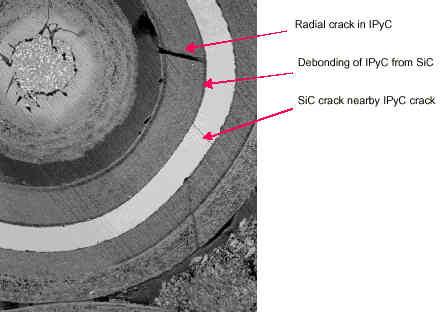What's Wrong With the Modular Pebble Bed Reactor?
The pebble bed reactor is being touted as nearly "accident proof." It is being hailed as the savior of the nuclear industry. Three Mile Island Alert opposes this reactor design because of its inherent dangerous safety defects.
1. It has no containment building.
2. It uses flammable graphite as a moderator.
3. It produces more high level nuclear wastes than current nuclear reactor designs.
4. It relies heavily on nearly perfect fuel pebbles.
5. It relies heavily upon fuel handling as the pebbles are cycled through the reactor.
6. There's already been an accident at a pebble bed reactor in Germany due to fuel handling problems.
COMMENTS
1. The lack of a containment building is a necessity because cooling is by natural convection. Also, a containment building would hinder the modular design - that is - no additional reactors could be added onto the plant after initial construction. This modular capability is what is so appealing to utilities because it requires less investment from the beginning.
Frankly, this single point is enough to conclude that this reactor design is unsafe. The United States has criticized Soviet reactor designs for not having containment buildings. It is the last line of defense for containing a radiological release.
Furthermore, the lack of a containment building leaves the reactor(s) wide open to a terrorist attack.
2. The uranium is covered by a layer of graphite. The graphite is covered by several other layers of materials including a silicon carbide. The graphite could burn if defects in the fuel defeat the outer coverings. The industry acknowledges that there is approximately 1 defect per pebble associated with these layers. There are approximately 370,000 pebbles in a pebble bed reactor. One tennis ball sized pebble comes out the bottom of the reactor every 30 seconds. It can be returned to the top of the reactor for additional use.
The 1957 Windscale accident and the 1986 Chernobyl accident both involved burning graphite. The burning graphite dispersed radioactivity. At Chernobyl, the burning graphite released radiation for ten days.
3. Although the volume by "configuration for long term storage" is lower than current design, the actual amount of high level waste by weight is higher. The pebbles are less radioactive than conventional fuel assemblies and more pebbles are required to produce the needed heat inside the reactor. There will be many more truck and railroad transports needed to remove the wastes. This will increase the numbers of vehicle accidents and the odds of another radiological accident involving these vehicles traveling across the country.
Creating even more nuclear waste without a final depository plan is unconscianable.
4. The industry acknowledges that "fuel pebble manufacturing defects are the most significant source of fission product release." Recent history shows that some companies have falsified fuel quality. In fact, there have been instances of fuel sabotage and tampering over the last few decades. Germany and Japan have shut down plants or refused fuel shipments once the problems were discovered. The industry can't produce "defect-free" fuel and therefore it is a certainty that a pebble bed reactor will experience an accident. The industry acknowledges that there is approximately 1 defect per pebble associated with these layers.
nuclear industry reports admit the US had been unable to manufacture satifactory pebbles
5. & 6. There was a pebble bed reactor accident at Hamm-Uentrop West Germany nine days after the Chernobyl accident. On May 4 1986, a pebble became lodged in a feeder tube. Operators subsequently caused damage to the fuel during attempts to free the pebble. Radiation was released to the environs. The West German government closed down the research program because they found the reactor design unsafe.
ECONOMICS
Anyone whom recommends a "nuclear revival" has not reconciled the costs.
- Log in to post comments



